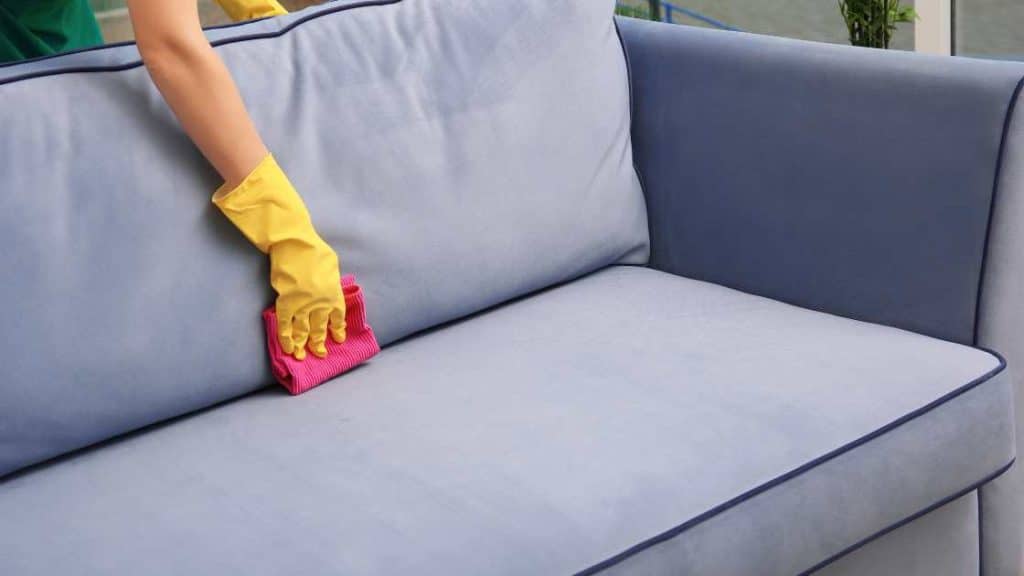If you want to know “How to Clean Cloth Recliner?” Please read out the full content.
To clean a cloth recliner, vacuum it thoroughly and use a suitable fabric cleaner for any stains. Opt for a gentle, circular motion to avoid fabric damage during spot cleaning.
Keeping your recliner clean not only extends its life but also maintains the aesthetics and comfort of your living space. Recliners, as places of rest and relaxation, often accumulate dirt, body oils, and occasional spills. Regular maintenance of your cloth recliner is straightforward and doesn’t require much time.
A clean, inviting chair can transform an ordinary room into a cozy retreat where you can unwind after a long day.
Whether dealing with the aftermath of a movie night or simply refreshing your favorite spot, knowing how to effectively clean cloth furniture is essential.
Let’s dive into the steps needed to ensure your recliner looks and feels as welcoming as the day you bought it.
Introduction To Recliner Cleanliness
Your cloth recliner is not just a spot to relax; it’s a haven. Like any other piece of furniture, it collects dust, spills, and various stains. Keeping your recliner clean ensures a healthy environment in your home and extends the life of your comfy retreat.
Importance Of Regular Cleaning For Cloth Recliners
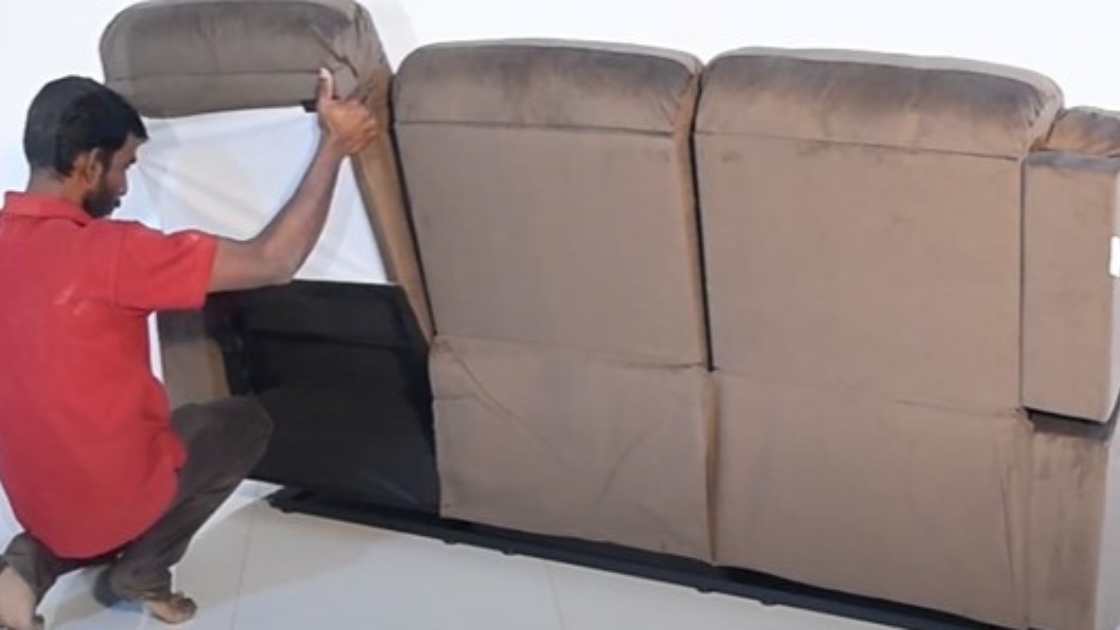
Why clean your cloth recliner regularly? Over time, dust mites, allergens, and dirt accumulate. This not only affects the fabric’s appearance but can also trigger allergies. Regular cleaning keeps these irritants at bay. Maintaining cleanliness also prevents stubborn stains from settling in, which could be harder to remove over time.
Overview Of Cleaning Techniques And Frequency Recommendations
Different cleaning methods apply to various types of spots and spills. From vacuuming to spot-cleaning, each technique plays a pivotal role in maintaining your recliner. It’s essential to know when and how to use each method.
| Cleaning Technique | Frequency | Application |
|---|---|---|
| Vacuuming | Weekly | General maintenance, dust, and crumbs |
| Spot-cleaning | As spills occur | Immediate action on spills |
| Deep-cleaning | Every 4-6 months | Thorough fabric cleansing |
Sticking to a cleaning schedule ensures your recliner remains fresh. Let’s dive deeper into each technique and learn to keep that throne of comfort in royal condition.
Your Cloth Recliner’s Material
Before diving into a deep clean, it’s necessary to get familiar with your cloth recliner’s fabric. The material determines the best cleaning approach. Not all fabrics react well to water or harsh chemicals. Identifying your recliner’s material can make a huge difference in care and maintenance. Let’s explore how to identify fabric types.
Identifying Fabric Types And Their Cleaning Requirements
Fabrics vary. Some are durable and tough, others are soft but delicate. Check the recliner’s label for symbols and codes that tell you what fabric you’re dealing with:
- W – Water-based cleaner safe
- S – Solvent-based cleaner needed
- WS – Water or solvent cleaner okay
- X – Vacuum or brush only, no water/solvent
Use these codes as a guide for which products and techniques to use.
Checking Manufacturer’s Cleaning Instructions
The manufacturer knows best. They often provide specific cleaning instructions. Look for a tag or manual that came with your recliner. It lists safe cleaning methods designed for your furniture’s fabric. This step prevents accidents and keeps your recliner in top shape. Always follow these to avoid damage.
| Fabric Type | Recommended Cleaner | Method |
|---|---|---|
| Cotton | Water-based | Steam cleaning |
| Microfiber | Water or solvent-based | Brush and vacuum |
| Leather | Special leather cleaner | Wipe with a soft cloth |
With these steps, cleaning your cloth recliner will be much easier.
Preparing For The Cleaning Process
Before diving into a deep clean of your cloth recliner, a bit of preparation will make the process smoother and more effective. Here’s how to ready yourself for the task ahead without time waste or potential mishaps.
Gathering Necessary Cleaning Supplies
To ensure a successful recliner cleaning, having all tools on hand is vital. A thorough clean requires more than just a rag and water.
- Vacuum cleaner with an upholstery attachment: To remove dust and loose dirt.
- Gentle detergent or specialized upholstery cleaner: For treating stains and giving a fresh scent.
- Soft-bristled brush: To work the cleaning solution into the fabric without harming it.
- Microfiber cloths: Ideal for wiping the recliner without leaving residue or scratches.
- White vinegar or baking soda: Natural options for tough stains and odor removal.
- Bucket or bowl: To mix cleaning solutions as needed.
Conducting A Spot Test To Prevent Damage
Testing your chosen cleaner on a small, hidden area of the recliner is critical. It helps avoid any irreversible damage to the fabric.
- Choose a discreet spot on the recliner, like the back or underneath.
- Apply a small amount of your cleaning solution.
- Wait for a few minutes to observe any adverse effects.
- If the fabric reacts well, proceed with the cleaning.
- If damage occurs, switch to a different cleaner and spot test again.
Once the spot test guarantees safety, you’re set to tackle the stains and dirt on your cloth recliner effectively.
The Dusting Phase: Removing Surface Dirt And Debris
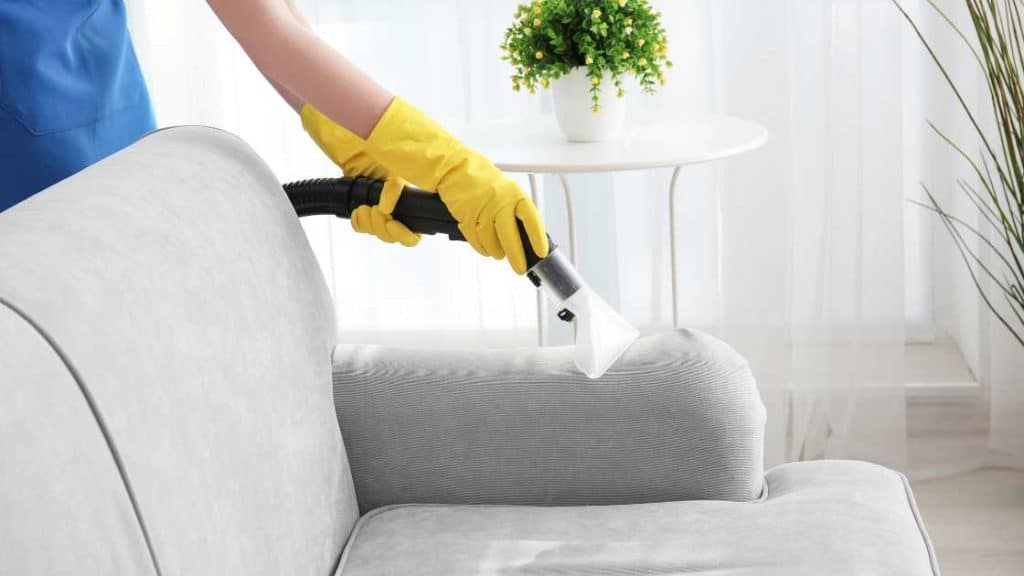
Keeping your cloth recliner clean ensures comfort and longevity. Begin with the dusting phase, a step to remove loose dirt. A thorough dusting sets the stage for more in-depth cleaning.
Using A Vacuum Cleaner With Upholstery Attachment
Effective dust removal starts with the right equipment. The vacuum cleaner becomes your best ally here. Attach the upholstery nozzle to delicately yet thoroughly clean the fabric. Follow these steps:
- Check the recliner for any loose change or objects.
- Attach the upholstery brush to your vacuum cleaner.
- Gently run the vacuum over all surfaces and cushions.
- For consistent results, ensure a repeating pattern over the entire recliner.
Tips For Dusting Hard-to-reach Areas
Crevices and folds can trap dust out of reach. Combat these challenges with:
| Tool | Usage |
|---|---|
| Cleaning Slime | Press into crevices and lift away dust. |
| Soft Brush | Sweep dust from nooks before vacuuming. |
| Compressed Air | Blow debris from tight spaces effectively. |
| Microfiber Cloth | Maneuver into gaps to collect fine particles. |
Remember to clean these areas regularly to avoid buildup and maintain your recliner’s cleanliness.
Stain Treatment: Tackling Tough Spots
Cozy cloth recliners are perfect for relaxation. But a stain can spoil the comfort. Learn to remove tough spots effectively. Keep recliners looking spotless and new with these tips.
Identifying Types Of Stains And Appropriate Removers
Battles with stains begin with knowing the enemy. Different stains need different cleaners. A chart can help sort this out.
| Stain Type | Suggested Remover |
|---|---|
| Foods and Beverages | Mild detergent, white vinegar |
| Oil and Grease | Baking soda, rubbing alcohol |
| Ink and Dye | Isopropyl alcohol, nail polish remover |
| Pet Stains | Enzymatic cleaner, vinegar solution |
Step-by-step Guide For Spot Cleaning Stains
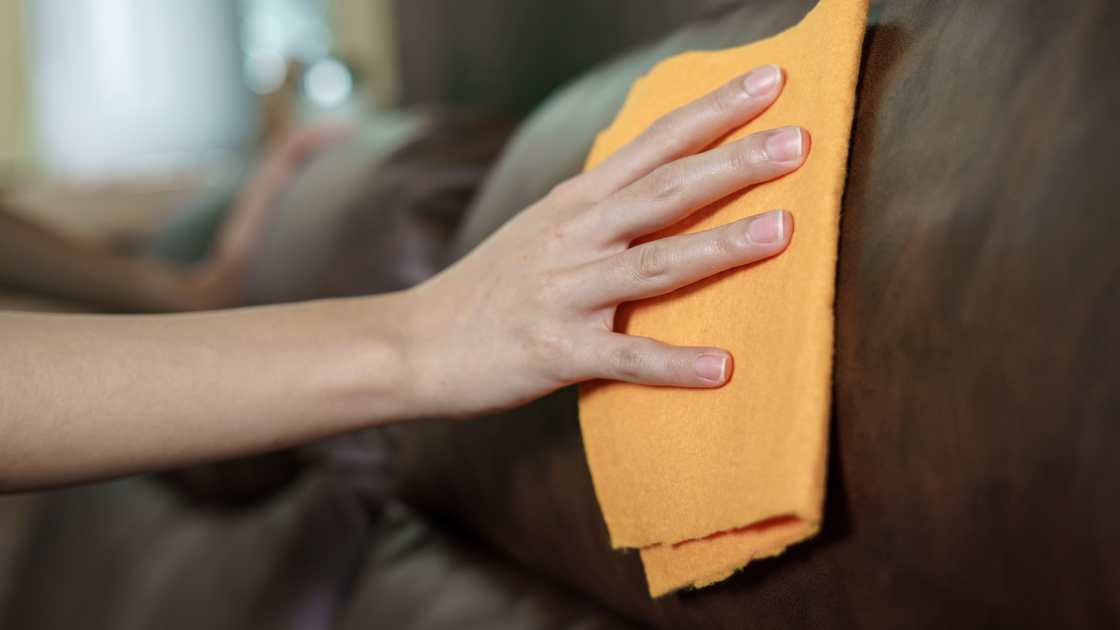
Follow these steps for spotless results.
- Blot the stain promptly.
- Check fabric care labels.
- Mix the correct cleaner.
- Apply cleaner to a cloth, not directly on the stain.
- Gently Dab the stain.
- Rinse with cold, clean water.
- Blot Dry with a fresh towel.
Repeat these steps if needed. Never rub stains, it can deepen them.
Deep Cleaning The Fabric
Over time, your cloth recliner can accumulate dirt, dust, and stains. Bringing it back to life requires a thorough deep clean. Exploring the right cleaning materials and deep cleaning process can ensure your favorite spot remains fresh and inviting.
Let’s dive into choosing the right upholstery cleaner and the steps for a successful shampoo and deep clean.
Choosing The Right Upholstery Cleaner For Your Recliner
Different fabrics need different care. Before purchasing any cleaner, check your recliner’s manufacturer instructions. Look for a cleaner suited for your recliner’s material. Test any product on a small, hidden section of the fabric to prevent any damage. You might consider the following types:
- Water-based cleaners are gentle and work well for most fabrics.
- Solvent-based cleaners tackle tough, greasy stains.
- For sensitive materials, dry cleaning solutions may be necessary.
The Process Of Shampooing And Deep Cleaning
Shampooing requires some preparation to ensure a clean and even finish. Start by vacuuming the recliner thoroughly to remove loose dirt. Here’s a step-by-step guide:
- Prepare your upholstery cleaner following the instructions on the label.
- Using a soft brush, apply the cleaner to the fabric in circular motions.
- Allow the solution to sit for a few minutes to break down the dirt.
- Blot the area with a damp cloth to remove the cleaner and dirt.
- Rinse the cloth and repeat the blotting until all cleaner is gone.
- Pat the area with a dry towel and let the recliner air dry.
For the best results, use a fabric protector after cleaning. This can help keep your recliner looking new. Ensure the recliner is completely dry before using it again.
Deodorizing Your Cloth Recliner
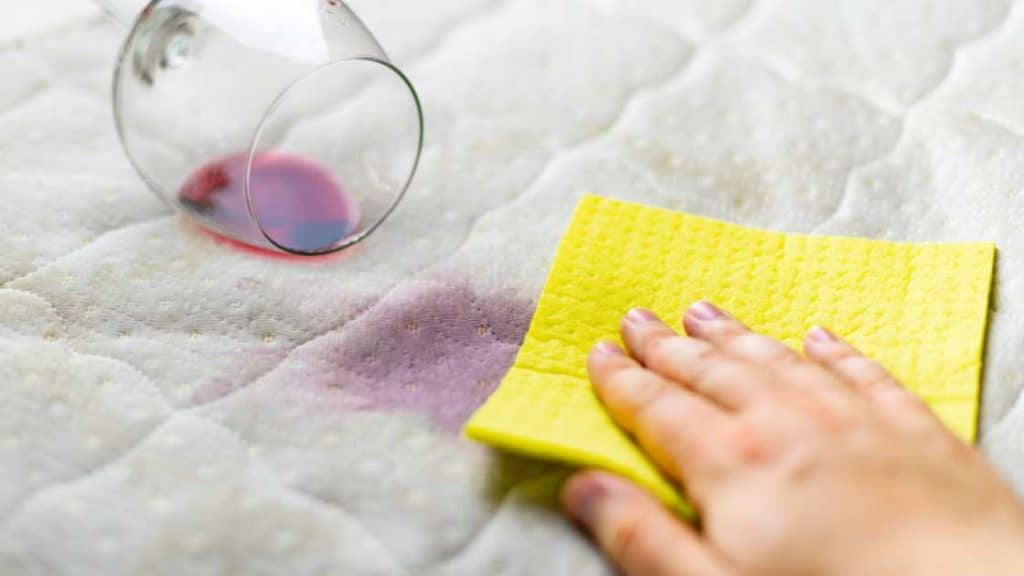
A fresh-smelling cloth recliner invites relaxation and comfort into any space. Over time, recliners can start to hold odors due to spills, pets, or simply regular use. Eliminating undesirable scents will rejuvenate your chair and your living area.
Let’s explore both natural and commercial deodorizing strategies fit for your favorite seat.
Natural Deodorizing Solutions
Opting for natural deodorizers is safe and eco-friendly. These options are gentle on fabrics and ideal for routine freshness boosts.
- Baking Soda: Sprinkle generously, leave for a few hours, vacuum it up.
- Vinegar Spray: Mix equal parts water and vinegar, lightly mist, let air dry.
- Essential Oils: Add to the vinegar solution or a damp cloth, wipe gently.
These methods are effective at absorbing and neutralizing odors without the use of harsh chemicals. Allow the recliner to air out if possible to help dissolve any lingering scents.
Commercial Deodorizers: What To Look For
When shopping for commercial deodorizers, ingredients and fabric compatibility are important.
| Features | Why It Matters |
|---|---|
| Non-Toxic | Safe for homes with kids and pets. |
| Enzyme-Based | Breaks down and removes odor-causing bacteria. |
| Fragrance-Free or Low-Scents | Prevents overpowering smells and is better for sensitive noses. |
Always test on a small, inconspicuous area first. Follow the instructions carefully and ensure proper ventilation while using these products.
Drying Your Recliner Properly
After a thorough cleaning, the next step is drying your recliner. Proper drying is key to prevent mold and odors. With the right approach, you can ensure your recliner is ready for use again in no time.
Techniques For Quick And Effective Drying
Avoid direct heat which can damage the fabric. Instead, use these techniques:
- Open windows for good air circulation.
- Use standing fans to blow air across the recliner.
- Place the recliner in a well-ventilated area.
- Pat dry with clean towels to absorb moisture.
For stubborn dampness, turn to dehumidifiers. They help remove moisture from the air and the fabric.
The Importance Of Allowing Full Air-drying
It’s essential to let your recliner air-dry fully. This prevents mildew and keeps the fabric fresh. Check these points:
| Step | Action |
|---|---|
| 1 | Leave the recliner untouched for a few hours. |
| 2 | Check for dampness in hidden areas. |
| 3 | Ensure the recliner is dry before use. |
Remember, rushing this process may invite unwelcome issues. Patience during drying keeps your recliner in top shape.
Maintaining A Clean Recliner
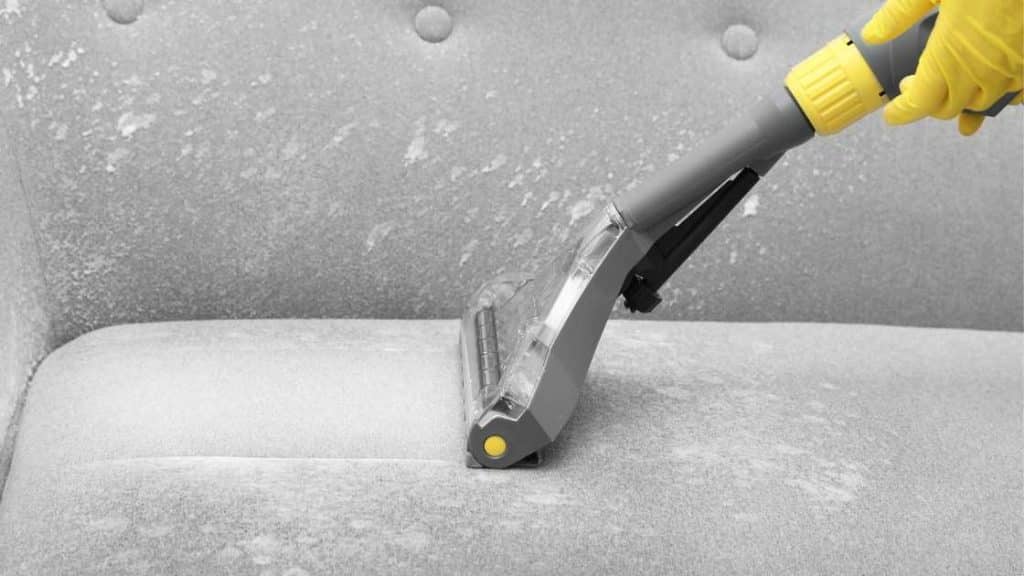
Your cozy cloth recliner is the perfect spot to relax after a long day. Keeping it clean not only extends its life but also ensures it’s always ready for you to unwind in. Dive into the simple ways to maintain your recliner’s cleanliness and the joy of a spotless, comfortable seat at all times.
Regular Upkeep To Prevent Dirt Accumulation
Consistent cleaning is key to stopping dirt from making a home in your recliner. Follow these steps every week:
- Vacuum the entire chair, using the upholstery attachment to reach crevices.
- Wipe down non-fabric parts with a damp cloth.
- Spot clean any spills or stains immediately with a gentle cleaner.
For deeper clean, schedule monthly sessions where you:
- Remove the cushions, if possible, and beat them outdoors to dislodge dust.
- Use a steam cleaner for a thorough fabric refresh.
Protective Measures To Prolong Cleanliness
Defend your recliner against spills and stains with these strategies:
- Use slipcovers or throws that can be easily removed and washed.
- Apply a fabric protector spray to shield the cloth material.
- Keep pets off the furniture, or use a pet cover if that’s not an option.
Remember, occasional professional cleaning works wonders for stubborn spots.
Addressing Common Questions And Troubleshooting
When giving your cloth recliner a fresh look, a few common issues might arise. Don’t worry. This section covers solutions to ensure long-lasting freshness and a spotless appearance for your chair. Whether it’s persistent odors or sudden spills, we’ve got the best tips to handle these situations.
What To Do If Odors Persist After Cleaning
Sometimes, even after a thorough clean, unpleasant smells can linger on your recliner. Here’s what to do:
- Baking Soda: Sprinkle it generously over the fabric, let it sit overnight, and vacuum it up the next day.
- Vinegar Solution: Mix equal parts water and vinegar, lightly mist the fabric, and then air dry for a natural odor eliminator.
- Commercial Odor Removers: Opt for a product designed for upholstery, following the instructions carefully.
Tip: Consistency is key. Sometimes multiple treatments are needed for complete odor elimination.
Handling Accidental Spills Quickly To Minimize Staining
Spills are a fact of life, but they don’t have to mean disaster for your cloth recliner. Act fast with these steps:
- Blot Immediately: Use a clean cloth to gently blot the spill, not rub, to prevent spreading.
- Spot Clean: Apply a mild detergent solution to the area, then blot again.
- Rinse: Dab with a damp cloth to remove soap residue and avoid watermarks.
- Air Dry: Let the area air dry completely; avoid using heat as it could set the stain.
Remember, the sooner you tackle a spill, the easier it is to prevent a stain.
Frequently Asked Questions For How To Clean Cloth Recliner
Can You Steam Clean A Cloth Recliner?
Yes, you can steam clean a cloth recliner to remove dirt and sanitize the fabric. However, check the manufacturer’s label for cleaning instructions beforehand to avoid any damage.
What Removes Stains From Cloth Recliners?
To remove stains from cloth recliners, use a mixture of water and mild dish soap. Apply the solution gently with a cloth, then rinse with a damp cloth and allow the area to air dry.
How Often Should I Clean My Cloth Recliner?
It’s best to clean your cloth recliner every 4 to 6 months. Regular vacuuming and immediate stain treatment can help maintain its appearance between deep cleanings.
Is Vinegar Safe For Cleaning Recliners?
Vinegar is safe for most cloth recliners but dilute it with water. It’s best to test on a small, inconspicuous area first to ensure it doesn’t discolor or damage the fabric.
How Do You Maintain A Fabric Recliner?
To keep a fabric recliner in optimal condition, regularly vacuum or brush off loose dirt and dust, and promptly address spills by blotting with a clean cloth.
Conclusion
Keeping your cloth recliner clean doesn’t have to be a chore. With the simple steps outlined, you’ll maintain a fresh, inviting look in no time. Follow the ease of spot cleaning, regular vacuuming, and the power of a deep clean session.
Remember, a little care goes a long way in preserving the comfort and aesthetics of your beloved recliner.

